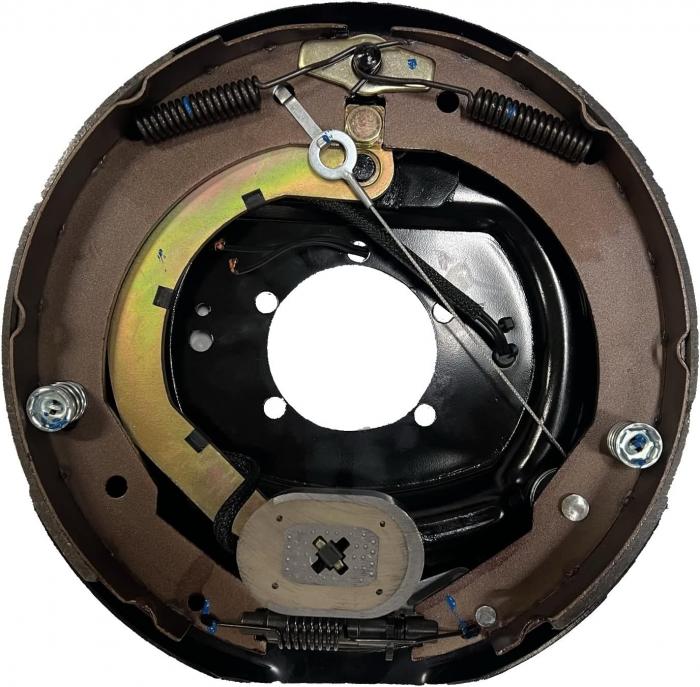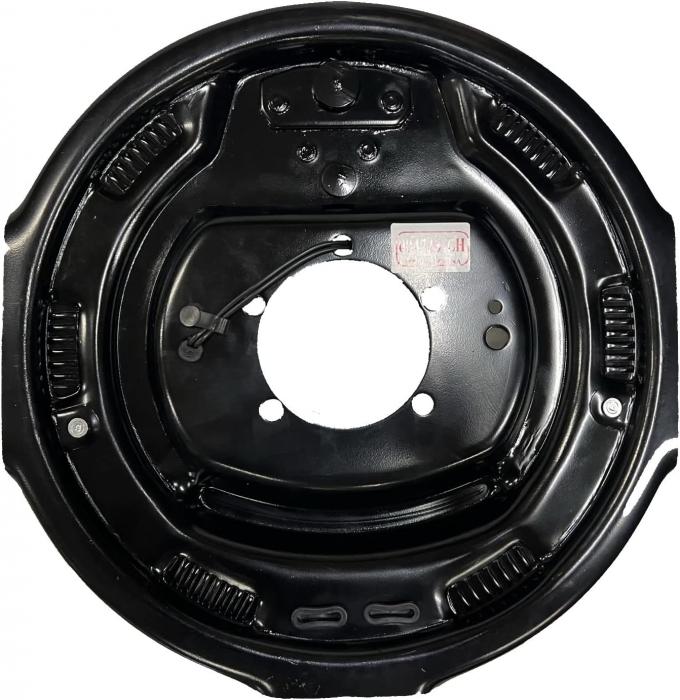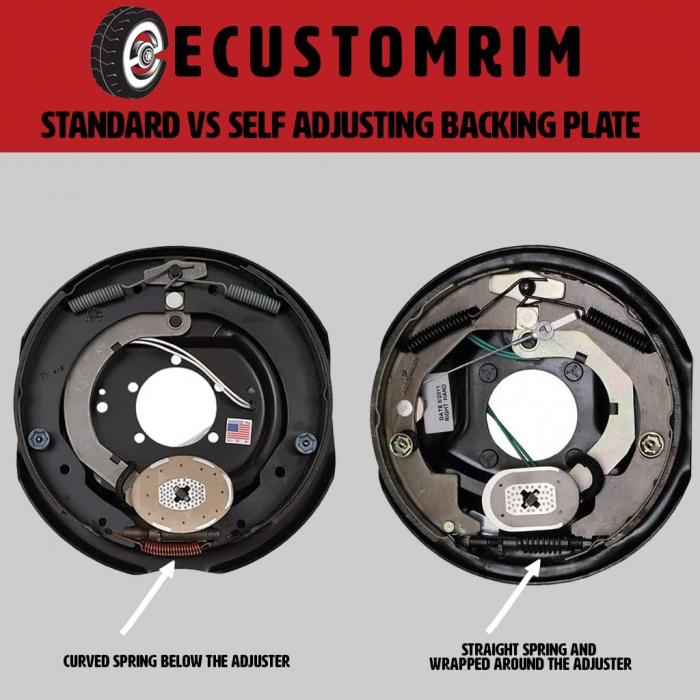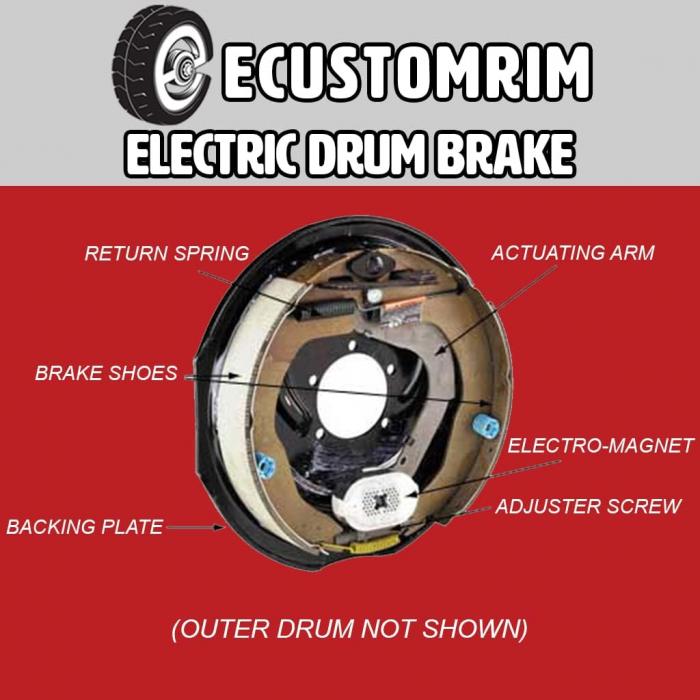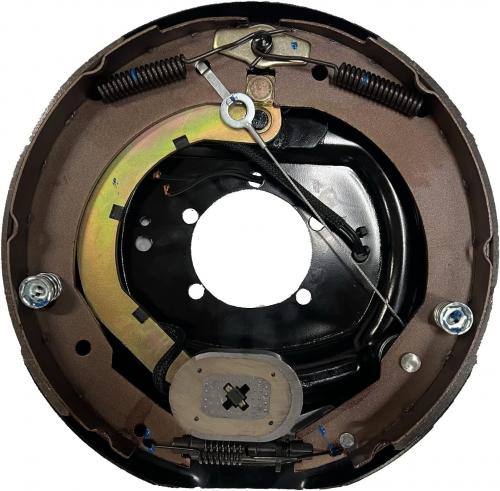|
|||||||||||||||||
Product Description
The automotive-grade pads on these automatically adjusting brakes offer lasting effectiveness. 12" x 2" Assemblies have rust-resistant, e-coated backing plates to protect from debris. Fits 14.5" to 16.5" wheels.
Features:
· Self-adjusting brakes let you maintain optimal braking power at all times
o Ensures reliable contact between the brake shoes and drums
o Prevents uneven wear on brake shoes
· Easier to install and gives you more control than hydraulic brakes
o Requires only an electric brake controller (sold separately) - no actuator or hydraulic lines needed
· Automotive-grade brake pads offer superior quality, smooth operation, and excellent braking torque
o Fully bonded to shoes for more consistent braking compared to riveted pads
o Tapered edges on pads minimize stuttering and brake lockup
· Adjuster plugs (included) protect internal components from dirt, grime, and road debris
· E-coat on backing plates fends off rust
· Left-hand (driver's-side) and right-hand (passenger's-side) brake assemblies included
o Mounting bolts and hardware (BRKH12) sold separately
· QAI , CSA , and SAE-N certifications ensure quality
Specs:
· Application: most standard hub-and-drum assemblies, including etrailer, Dexter, Lippert (LCI), and AL-KO/Hayes
· Dimensions: 12" diameter x 2" wide
· Mounting flange bolt pattern: 5 bolt
· Wheel size: 14-1/2", 15", 16", and 16-1/2"
· Axle rating: 5,200 lbs, 6,000 lbs, and 7,000 lbs
· Limited 1-year warranty
Quick Tip: There's really not a whole lot to getting new drum brakes. If you've confirmed that all of the specs listed above line up with what you need for your trailer, you can be pretty sure these will work for you.
Automotive-Grade Brake Pads
The pads on these trailer brakes are made of the same friction material that you might find on a car's drum brakes. In fact, the material is SAE-N certified. So, not only does it provide high-performance braking, but it's environmentally friendly, too! With these brakes, your trailer will be good to go on any road throughout the United States and Canada.
The superior quality of these pads is also due to the fact that they're bonded to the shoes, not just nailed down. Riveted brake pads will always give you a screeching reminder to replace your brake shoes. That's because the rivets will scrape against your drum as the friction material wears down. You won't have that noisy problem with bonded brake pads. You'll also get a little more friction pad contact because there aren't any cutouts for rivets. And more friction means more stopping power.

These pads are also tapered, which should help to prevent any broken, crumbly bits of material from rotating inside the drum as the pads wear over time. Brakes without these tapers are more likely to create a jarring braking experience that could cause the brakes to stutter and lock up.
Self-Adjusting Brakes Don't Require Routine Maintenance
With typical electric brake assemblies, you need to manually adjust them every now and then to make sure you're getting the shortest stopping distances every time you tow.
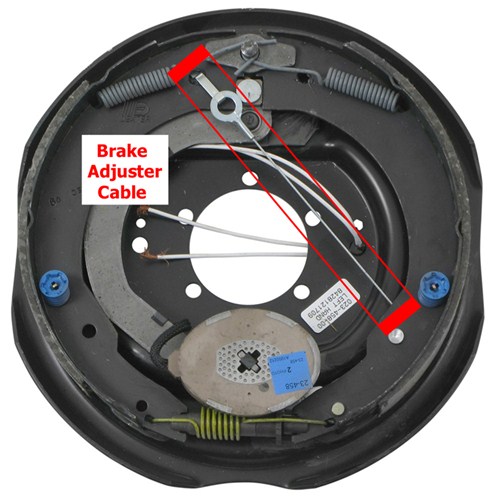
With self-adjusting brakes, though, you'll always have peak stopping power - simple as that! As the brake pads wear over time, a tensioning cable will automatically keep the pads in alignment so they'll consistently make contact with your drum when you brake. You won't have to do tedious manual adjustments anymore.
Thoroughly Tested for Safety
A lot of resources have been invested to ensure that these brakes meet the requirements for certification set by the QAI and CSA . Basically, these certifications tell you that these trailer brakes are well built and safe for use on the road. They've been tested for braking performance under real-world conditions to provide the most realistic scenario for the everyday tower.
How to Break In New Brakes
Once you get these brakes installed, you'll need to break them in. First, find a long stretch of road or a big, empty parking lot. Once you're there, set your brake controller to its maximum setting and get moving. Speed up to about 40 mph and brake to slow to about 20 mph. Repeat this 15-30 times. The goal is to get the brake shoes and magnet properly seated into your drum. You'll know you've done that when it feels less jerky (and more consistent) each time you apply the brakes.
Note: The brakes will be very hot after doing this, so after every 10 stops you'll want to wait about 10 minutes to let the brakes cool off before continuing. If you don't, you might cook and crack the pad material.
B12EA-21 etrailer by AxleTek Electric Brake Assembly - LH - Driver Side - 12" x 2" - Self-Adjusting - 5,200 lbs to 7,000 lbs
B12EA-22 etrailer by AxleTek Electric Brake Assembly - RH - Passenger Side - 12" x 2" - Self-Adjusting - 5,200 lbs to 7,000 lbs


